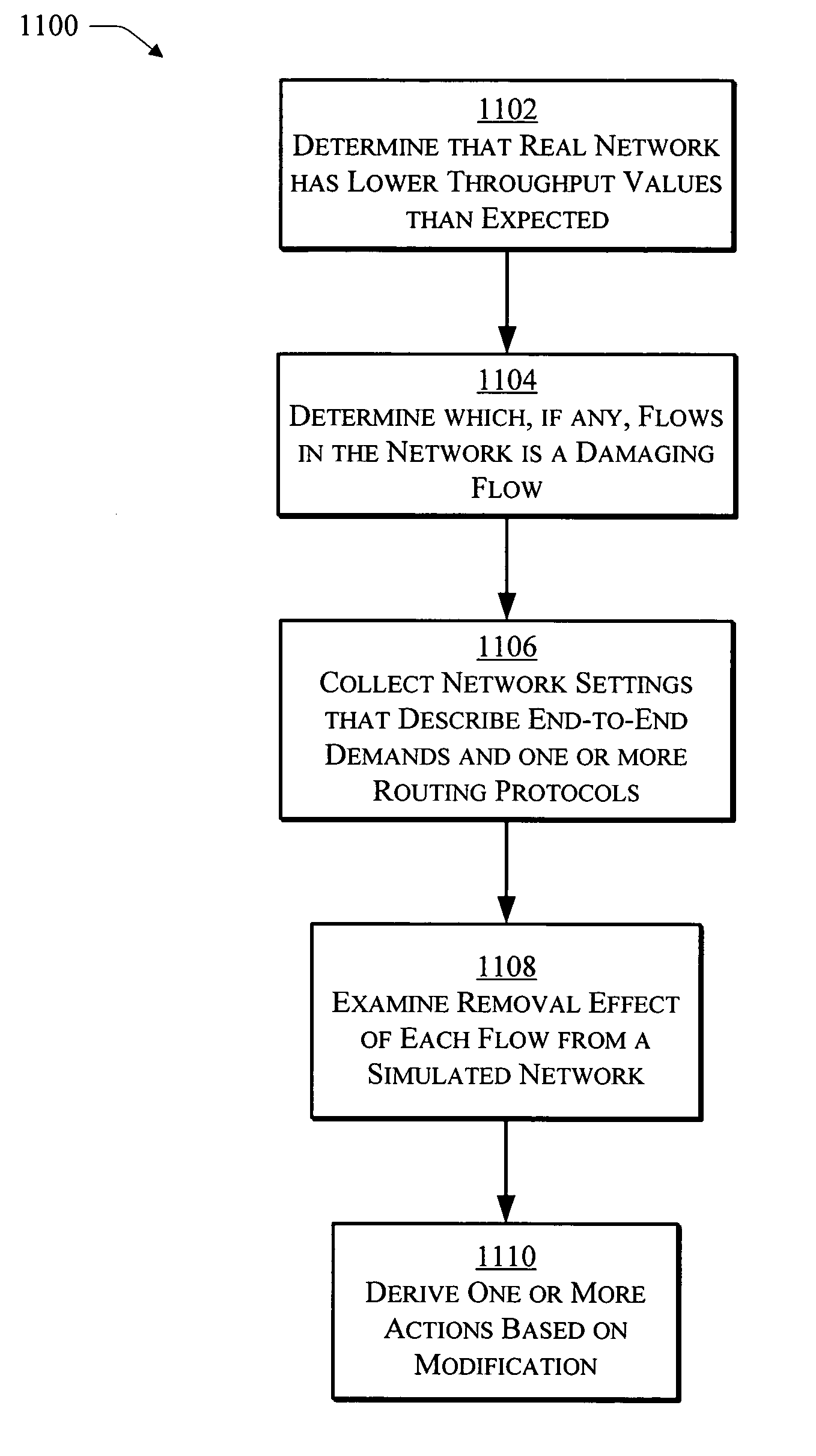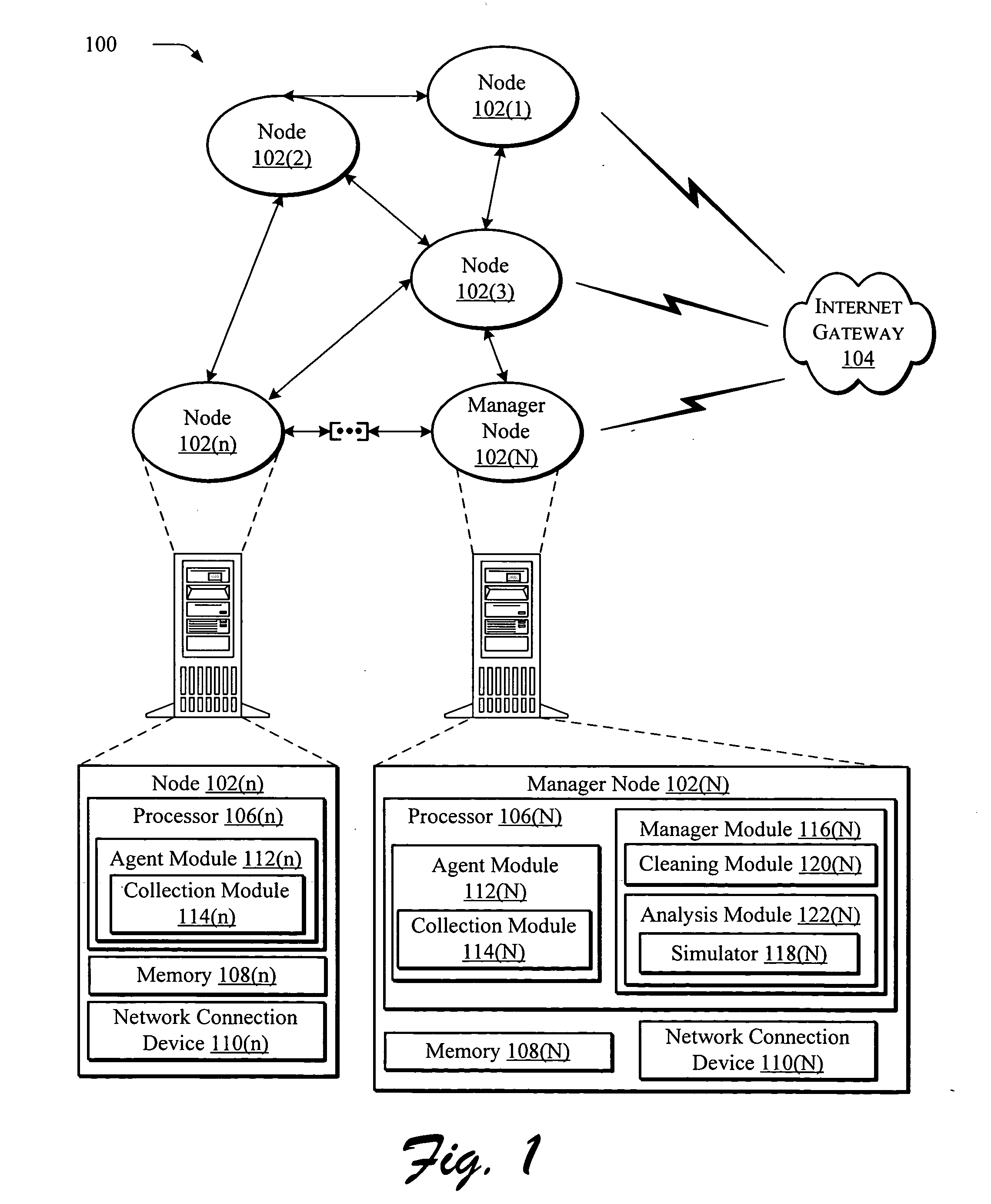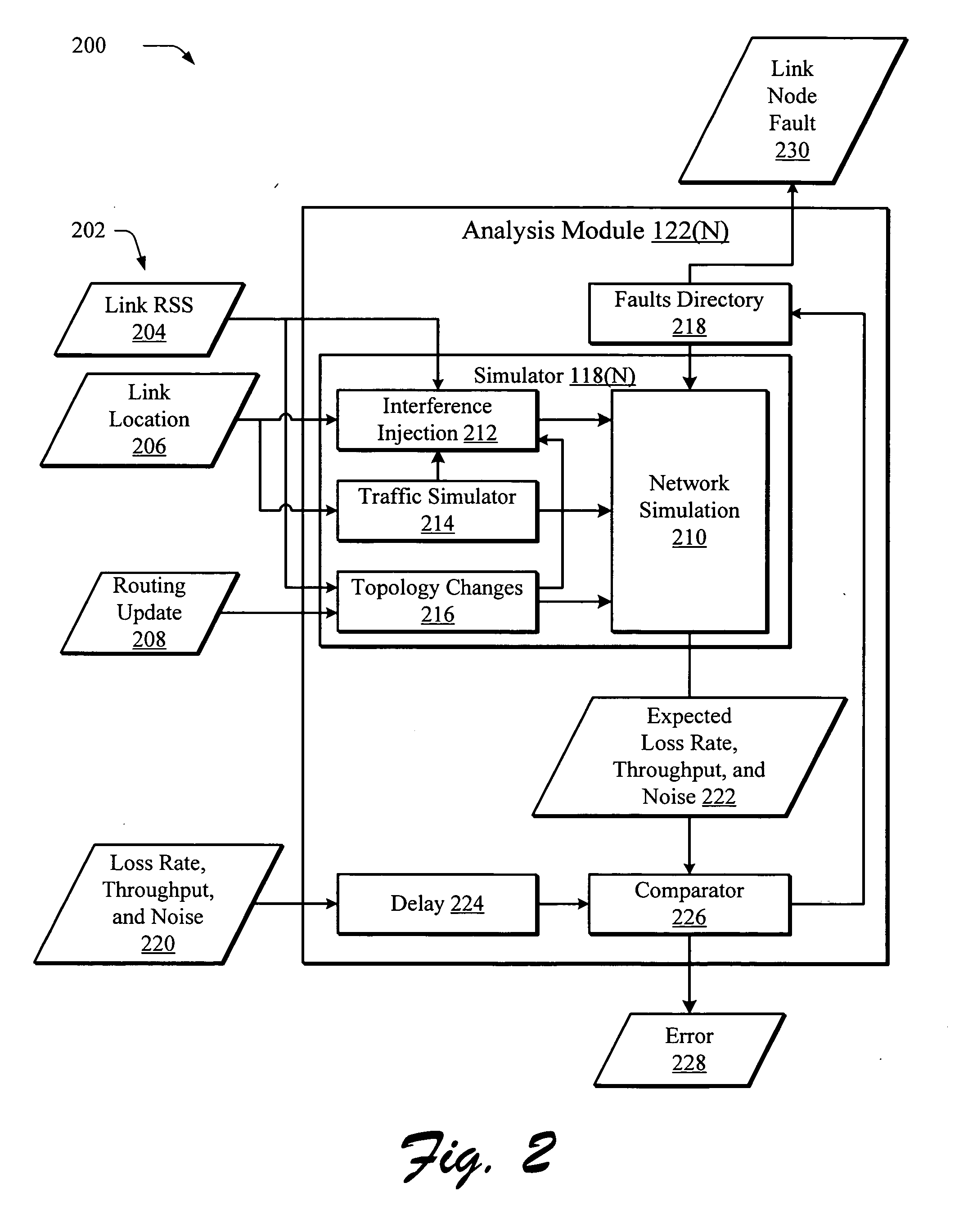What-if analysis for network diagnostics
a network diagnostic and what-if analysis technology, applied in the field of wireless networks, can solve problems such as complicated network troubleshooting, wired or wireless, and limited attention of both industry and research communities, and achieve the effect of improving network performance and network performan
- Summary
- Abstract
- Description
- Claims
- Application Information
AI Technical Summary
Benefits of technology
Problems solved by technology
Method used
Image
Examples
Embodiment Construction
Overview
[0026] A network troubleshooting framework is described for use in wired and / or wireless networks to maintain efficient and reliable network operations. The framework described herein may employ an online trace-driven network simulation to detect faults and perform root cause analysis of the faults. The network simulation is “online” in that it may obtain network performance data from a “real” network. A trace is a utility that records a route for each hop through a network (e.g., a trip taken by a data packet from one router or other intermediate point to another in a network) between an originating device and a target device. The trace may be utilized to calculate an amount of time each hop took to perform as well as the specific intermediate device that routed the data packet.
[0027] The framework may be applied to diagnose performance problems (i.e., faults) caused by packet dropping, link congestion, medium access control (MAC) misbehavior, external noise, and so on. ...
PUM
 Login to View More
Login to View More Abstract
Description
Claims
Application Information
 Login to View More
Login to View More - R&D
- Intellectual Property
- Life Sciences
- Materials
- Tech Scout
- Unparalleled Data Quality
- Higher Quality Content
- 60% Fewer Hallucinations
Browse by: Latest US Patents, China's latest patents, Technical Efficacy Thesaurus, Application Domain, Technology Topic, Popular Technical Reports.
© 2025 PatSnap. All rights reserved.Legal|Privacy policy|Modern Slavery Act Transparency Statement|Sitemap|About US| Contact US: help@patsnap.com



